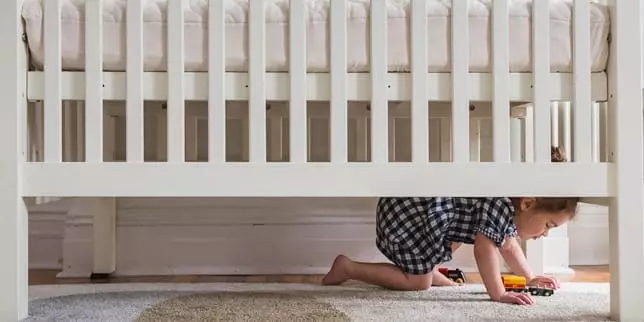Making the leap from a crib to a toddler bed can be a pivotal moment in a child’s development and a source of anxiety for parents. While moving to a ‘big kid’ bed is often seen as a rite of passage, it is crucial to evaluate whether your child is truly ready for this transition. Many factors can influence the decision, including age, sleep habits, and emotional readiness. In this article, we will delve into essential considerations that can help you gauge the right time for this significant shift.
One of the most critical factors to consider when transitioning to a toddler bed is your child’s age and developmental stage. Experts generally recommend waiting until your child is at least three years old before making the switch. Many parents may feel societal pressure to move their child into a toddler bed once they reach a certain age, but this pressure can lead to premature transitions. Until age three, many toddlers find comfort in the confines of their cribs, which provide a sense of security. Removing this environment too soon could lead to anxiety and restlessness.
Moreover, developmental milestones play a crucial role in this decision. Children under three might not have the cognitive skills to understand the differences between a crib and a bed, and may struggle with the newfound freedom. It’s essential to strike a balance between nurturing independence and ensuring security.
Before considering a transition, it’s important to evaluate your toddler’s sleep habits. If your child is already experiencing sleep difficulties—be it trouble falling asleep, frequent awakenings during the night, or early risings—transitioning to a toddler bed could exacerbate these issues. Ideally, the focus should be on establishing a solid sleep routine prior to the move. Tuning the sleep schedule, introducing calming bedtime rituals, or even consulting sleep training methods can be beneficial. A well-established routine can make for a smoother transition when the time comes.
Additionally, if your child is content in their crib, it may be worth waiting. Satisfaction in their current sleeping situation can often correlate with better sleep overall. Children who communicate a desire to sleep in a toddler bed, or express curiosity about it, are generally more prepared for the move.
As children begin to assert their independence, those who frequently push boundaries during waking hours may be more challenging to manage at bedtime. Those tendencies can manifest as resistance to staying in bed at night. Introducing tools like a toddler clock can aid in establishing expected boundaries around sleep time. This can help children understand that they need to stay put during prescribed hours, making for a smoother bedtime routine.
If your child has a tendency to climb out of the crib, addressing this behavior is essential before considering a transition. Many parents find temporary solutions—like using sleep sacks or implementing reward charts—to discourage climbing. Even simple methods, such as consistently returning your child to bed without engaging in conversation, can help them understand that they should remain in their sleeping space.
For families anticipating a new addition, transitioning a toddler out of the crib, just to have a newborn move in, can create additional challenges. The last thing any parent wants is to be managing nighttime disruptions from both a toddler learning to stay in their bed and a new baby. In such scenarios, it may be more prudent to keep the older child in the crib for a bit longer, even if that means accommodating two cribs for a while.
For families that have already made the switch but found it to be problematic, it’s important to remember that it’s never too late for a rethink. Reintroducing the crib can often restore a sense of security for the child. Travel cribs or portable beds can serve as alternative options should the original crib be unavailable.
Transitioning from a crib to a toddler bed is more than just upgrading a piece of furniture; it’s about nurturing independence while ensuring your child’s security. By carefully evaluating your child’s readiness through their age, sleeping habits, and behavioral tendencies, you can make an informed decision that ultimately leads to a safer and more comfortable night’s sleep for everyone involved. Remember, each child is unique, and there’s no one-size-fits-all timeline for making this important transition. Listen to your instincts and your child’s cues, and you may find the move to a toddler bed is not only manageable, but fruitful.

